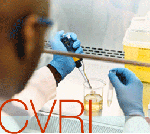$50 million gift to UCSF for cardiovascular research and treatment

UCSF has received a $50 million gift toward construction of a new building for cardiovascular research and clinical treatment at the University’s Mission Bay campus. The grant, from The Atlantic Philanthropies, is the largest single commitment from a foundation in UCSF’s history.
The new building will be a collaborative center that brings basic research scientists and clinicians together under the same roof, thus accelerating their efforts to understand cardiovascular diseases, such as heart attack and stroke. It will house the existing world-renowned UCSF Cardiovascular Research Institute, known as CVRI, and will be home to a new UCSF Center for Prevention of Cardiovascular Disease with an outpatient facility that will focus on advancing ways to predict and prevent these devastating illnesses.
This is the second major gift for the UCSF Mission Bay campus from The Atlantic Philanthropies, which was founded by New Jersey businessman and philanthropist Charles F. Feeney, co-founder of the Duty Free Shoppes chain of airport outlets. Atlantic also contributed $20 million to the Helen Diller Family Cancer Research Building, which is now under construction and will be adjacent to the proposed cardiovascular building.
“The Atlantic Philanthropies are known for their generosity in areas that have major social impact, and we are gratified by the foundation’s faith in our research and clinical commitment,” said UCSF Chancellor J. Michael Bishop, MD. “The Cardiovascular Research Institute is at the forefront of discovery in some of the world’s most debilitating diseases. This building will be critical to its success.”
UCSF has allocated $52 million from its own resources and an anonymous donor has contributed $30 million toward the building’s cost, which is projected to be $241 million. The University is actively seeking major gifts from other individuals and foundations to garner the resources necessary for construction, and to meet the 1:1 match required by Atlantic. Construction of the building is expected to begin in 2008, with completion in 2011.
Cardiovascular diseases are the leading cause of death and disability in the United States, accounting for roughly 950,000 deaths each year, and are expected to increase as the population ages. Those diseases include heart attack, stroke and peripheral vascular disease, as well as asthma, cystic fibrosis and other pulmonary conditions.
The new building will enable UCSF to bring together scientists and clinicians who are now dispersed over several sites, while also integrating many levels of research aimed at understanding, preventing and treating these diseases.
“This is an extraordinary opportunity to develop a disease-focused research program and clinical facility literally from the ground up,” said Shaun Coughlin, MD, PhD, UCSF professor of medicine and director of CVRI. “Bringing together outstanding faculty with complementary skills in basic and clinical science will catalyze progress on the major unsolved problems in cardiovascular biology and speed the pace of translating the research into new treatments for patients.”
By pooling physicians’ knowledge of physiology and disease with basic scientists’ understanding of genetics, chemistry, protein interactions, molecular and cell biology, and model systems, Coughlin said, UCSF hopes to attain a level of sophistication in thinking about disease mechanisms that would not otherwise be possible.
Facilitating that type of collaboration has been a guiding factor in planning the new facility, including its proximity to the cancer research building. Researchers in both buildings, for example, will be able to employ whole body imaging that allows them to follow cells non-invasively during normal activity and through disease processes. The cardiology clinic also will complement other UCSF Medical Center facilities planned for the Mission Bay campus, such as the proposed 289-bed, integrated hospital complex that will serve children, women and cancer patients.
UCSF has shown throughout its history that interaction of scientists with different skills and knowledge is the key to valuable discovery and quicker “translation” of research into patient care. CVRI Director Coughlin, a cardiologist and molecular biologist, knows first-hand the benefits of cross-discipline interactions. In 1990, the proximity of Coughlin’s lab to that of cell biologist Vishwanath Lingappa, MD, PhD, helped Coughlin’s laboratory to discover how the enzyme thrombin activates platelets to form blood clots. That discovery is now yielding a new class of anti-clotting drugs.
UCSF’s commitment to translating lab research into clinical care was recognized by the National Institutes of Health in October 2006, when UCSF became one of seven universities to receive NIH funding for a Clinical and Translational Science Institute to support innovative approaches in the field.
The new 232,000 square-foot building focusing on cardiovascular disease will include “clusters” of about 20 faculty offices on each of its three floors, which are joined by a central staircase. Flexible laboratory space will accommodate nearly 500 graduate students, post-doctoral scientists and other researchers. The building will allow CVRI to increase its faculty investigators from the current 22 to 48. Up to an additional 12 faculty will be recruited jointly with clinical and basic science departments.
UCSF is a leading university that advances health worldwide by conducting advanced biomedical research, educating graduate students in the life sciences and health professions, and providing complex patient care.
The Atlantic Philanthropies are dedicated to bringing about lasting changes in the lives of disadvantaged and vulnerable people. Atlantic focuses on four critical social problems: Aging, Disadvantaged Children & Youth, Population Health, and Reconciliation and Human Rights. Programs funded by Atlantic operate in Australia, Bermuda, Northern Ireland, the Republic of Ireland, South Africa, the United States and Viet Nam. More inormation is available at
www.atlanticphilanthropies.org.
\###